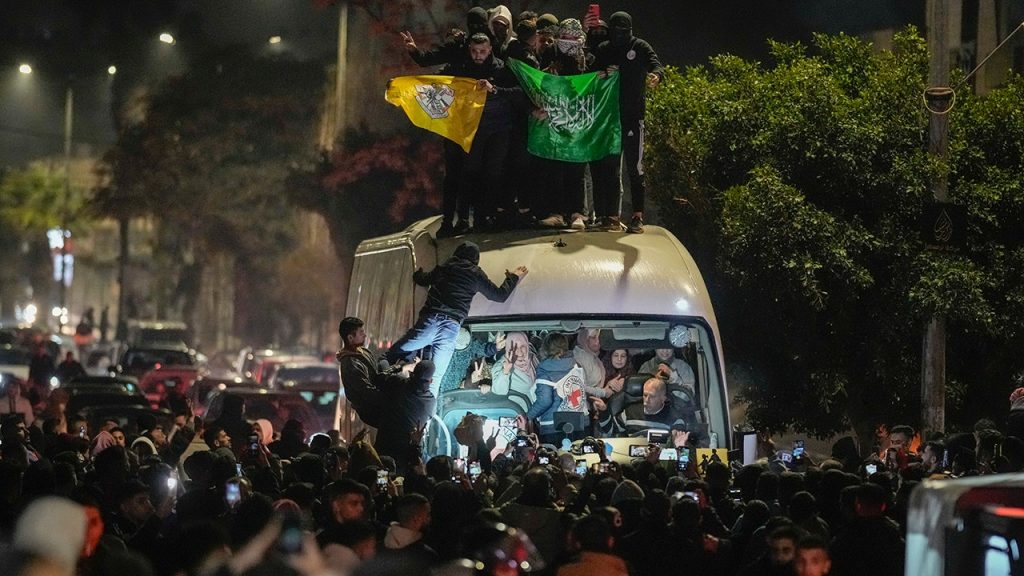The recent release of 90 Palestinian prisoners, primarily women and teenagers, has ignited a mixture of jubilation and somber reflection within the Palestinian community. The release, part of a larger prisoner exchange agreement with Hamas, saw these individuals return to cheering crowds in the West Bank after their detention in Israel’s Ofer prison. While their freedom was celebrated, the backdrop of ongoing conflict and loss tempered the joy, creating a complex emotional landscape for both the released prisoners and the Palestinian population. The released prisoners were held on charges related to Israeli state security, with some facing administrative detention – a practice allowing for indefinite imprisonment without formal charges or trial. The case of Khalida Jarrar, a prominent political figure and member of the Popular Front for the Liberation of Palestine (PFLP), exemplifies this complex situation. While her release was welcomed by supporters, her history of arrests highlights the ongoing tension between Israel and Palestinian political activism, with organizations like Human Rights Watch raising concerns about Israel’s targeting of non-violent political opposition.
The scenes of released prisoners reuniting with their families underscored the deeply personal impact of the conflict. Bara’a Al-Fuqha, a 22-year-old medical student, expressed relief at being reunited with her family after six months of administrative detention. While grateful for her freedom, she acknowledged the bittersweet nature of the moment, emphasizing the suffering endured by Palestinians still in detention and the ongoing struggles faced by those in Gaza. These personal accounts illuminate the human cost of the conflict and the pervasive sense of uncertainty that continues to grip the region. The prisoner exchange is part of a fragile ceasefire agreement aimed at de-escalating tensions following a period of intense conflict.
The prisoner exchange, a cornerstone of the ceasefire agreement with Hamas, is a complex and contentious issue. While hailed by some as a crucial step towards peace, it has also drawn criticism, particularly from those who view Hamas as a terrorist organization. The agreement stipulates the gradual release of 33 Israeli hostages held in Gaza over a six-week period, in exchange for the release of approximately 2,000 Palestinian prisoners and detainees from the West Bank and Gaza. This exchange marks a significant development in the ongoing conflict, representing a potential turning point in the relationship between Israel and Hamas. However, the long-term implications of the agreement remain uncertain, with both sides facing considerable challenges in maintaining the fragile ceasefire.
The initial release of three Israeli hostages – Doron Steinbrecher, Romi Gonen, and Emily Damari – was met with both relief and concern. After enduring 471 days in captivity, their return to Israel marked a significant moment for the families and the nation. However, their physical and psychological condition following their ordeal remains a primary concern, with medical professionals emphasizing the need for extensive evaluations and treatment. The hostages’ experiences underscore the brutal realities of the conflict and the psychological toll it takes on individuals caught in its crossfire. Their return highlights the urgent need for humanitarian efforts to address the trauma experienced by those affected by the conflict.
The prisoner exchange agreement, while offering a glimmer of hope for de-escalation, also highlights the deeply entrenched divisions that fuel the ongoing conflict. The exchange has sparked debate and controversy, reflecting the diverse perspectives on the conflict and the challenges in achieving a lasting peace. The release of Palestinian prisoners considered by Israel to be security threats raises concerns about potential future violence, while the return of Israeli hostages brings to the fore the human cost of the conflict. The agreement underscores the complex web of political, security, and humanitarian considerations that shape the dynamics of the region.
Moving forward, the success of the ceasefire and the long-term implications of the prisoner exchange will depend on the commitment of both sides to de-escalation and dialogue. The fragility of the current situation necessitates a concerted effort by all parties to build trust and address the underlying causes of the conflict. The release of prisoners and hostages represents a significant step, but it is only one piece of a much larger puzzle. Achieving a lasting peace requires a comprehensive approach that addresses the political, security, and humanitarian dimensions of the conflict, with a focus on fostering understanding and reconciliation between Israelis and Palestinians. The international community plays a crucial role in supporting these efforts and ensuring that the fragile ceasefire translates into a sustainable peace.

